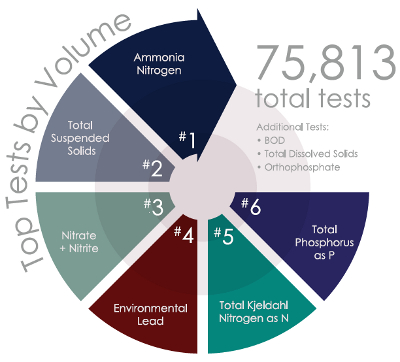Inorganic Chemistry
Royce Riessen, laboratory technician,
filters samples for solids determination.

The Inorganic Chemistry section in Ankeny performs tests that detect inorganic elements in air, groundwater, drinking water, surface water, soil, wastewater and sludge. Samples from public and private water systems are analyzed for levels of nitrate and nitrite, total coliform and E.coli bacteria.
The unit also tests for arsenic, cadmium, mercury, lead and many other metals. Lead testing of blood is conducted on specimens from children and adults from around the state. The scientists also test for lead in dust, paint, soil, pottery and food products.
FY13 achievements:
- The development and validation of Unregulated Contaminant Rule 3 (UCMR3) methods for chlorate by ion chromatography (EPA Method 300.0), metals (chromium, vanadium, strontium, molybdenum and cobalt) by EPA Method 200.8, and hexavalent chromium by EPA Method 218.7 were successfully achieved. Testing for these contaminants in water from Iowa municipalities is under way.
- The sample preparation team implemented a system for ammonia distillations, which eliminates the need for cooling water and saves between 300 and 400 gallons of water each day of operation.
- The nutrient demand section started a collaboration with the Water Technology Program at Des Moines Area Community College. This partnership provides students hands-on laboratory experiences in drinking water techniques using microbiology and an introduction to BOD (biochemical oxygen demand)/CBOD (carbonaceous biochemical oxygen demand) and solids determinations.